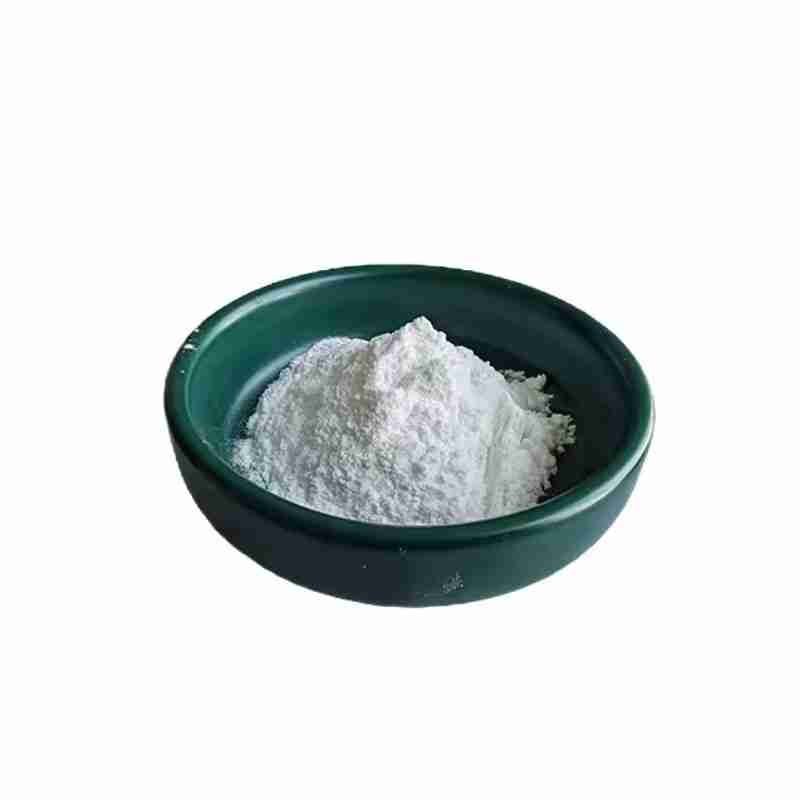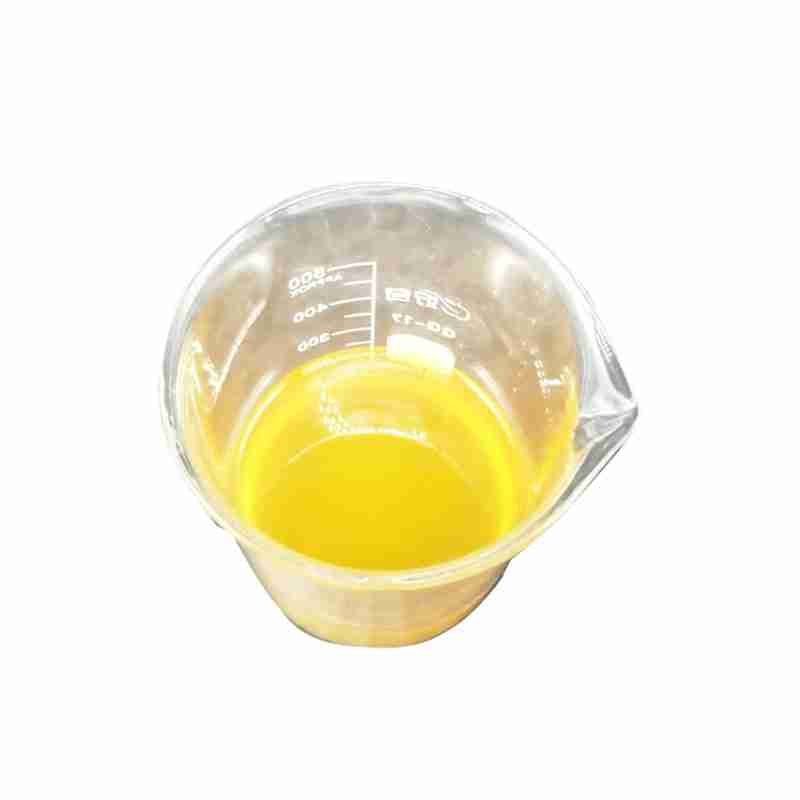1,8-Diazabicyclo[5.4.0]undec-7-ene CAS# 6674-22-2 DBU
1,8-Diazabicyclo [5.4.0] undec-7-ene is a bicyclamidine base. In natural chemistry, it is a non nucleophilic, sterically impeded tertiary amine base. It is reported that it is superior to amine drivers in Baylis Hillman response and can advertise the methylation response of phenol, indole as well as benzimidazole with dimethyl carbonate under mild conditions.
1,8-Diazabicyclo [5.4.0] undecanon-7-ene, referred to as DBU, is a type of amidine with a dual heterocyclic framework. It is an anemic or light yellow liquid at space temperature level, as well as can be dissolved in water, ethanol, acetone as well as other natural solvents. It is normally saved listed below 30 ??.
发送询盘
1,8-Diazabicyclo[5.4.0]undec-7-ene CAS# 6674-22-2 DBU
| DBU Basic information |
| Product Name: | DBU |
| Synonyms: | 1,8-DIAZABICYCLO[5.4.0]UNDEC-7-ENE;1,8-DIAZABICYCLO[5.4.0]UNDEC-7-ENE (1,5-5);1,8-DIAZEBICYCLO[5.4.0]UNDEC-7-ENE;1,8-Diazabicyclo[5.4.0]undecane-7-ene;1,8-Diazabicyclo(5 x 4 x 0)undec-7-ene;Pyrimido[1,2-a]azep;1,8-Diazabicyclo[5.4.]undec-7-ene;1,8-Diazabicyclo[5.4.0]undec-7-ene, 98% 100GR |
| CAS: | 6674-22-2 |
| MF: | C9H16N2 |
| MW: | 152.24 |
| EINECS: | 229-713-7 |
| Product Categories: | pharmacetical;Pyridines;Other Reagents;Biochemistry;Reagents for Oligosaccharide Synthesis;Biochemics;pharmaceutical raw material;Organic intermediates;OLED materials,pharm chemical,electronic;A clear, light yellow liquid of relatively low volatility. It has only a slight ammonia-like odor, is miscible with water and is soluble in most organic solvents.;bc0001 |
| Mol File: | 6674-22-2.mol |
 |
|
| DBU Chemical Properties |
| Melting point | -70 ??C |
| Boiling point | 80-83???C0.6?mm Hg(lit.) |
| density | 1.019?g/mL?at 20???C(lit.) |
| vapor pressure | 5.3 mm Hg ( 37.7 ??C) |
| refractive index | n20/D?1.523 |
| Fp | >230???F |
| storage temp. | Store below +30??C. |
| solubility | soluble |
| form | Liquid |
| pka | 13.28??0.20(Predicted) |
| color | Clear colorless to light yellow |
| Odor | Unpleasant |
| PH Range | 12.8 at 10 g/l at 20 ??C |
| PH | 12.8 (10g/l, H2O, 20??) |
| explosive limit | 1.1-6.5%(V) |
| Water Solubility | soluble |
| Sensitive | Air Sensitive |
| BRN | 508906 |
| Stability: | Stable. Incompatible with strong oxidizing agents, acids, acid chlorides, acid anhydrides. |
| InChIKey | GQHTUMJGOHRCHB-UHFFFAOYSA-N |
| CAS DataBase Reference | 6674-22-2(CAS DataBase Reference) |
| NIST Chemistry Reference | 1,8-diazabicyclo [5.4.0]undec-7-ene(6674-22-2) |
| EPA Substance Registry System | Pyrimido[1,2-a]azepine, 2,3,4,6,7,8,9,10-octahydro- (6674-22-2) |
- 2
- 2-diallylpent-4-en-1-amine
- 4
- 95-16-9
- Ammonium sulfamate
- Benzothiazole
- cas:67889-00-3ح2
- cas:83524-75-8 | pigment black 32
- cas:928836-00-4 | 2
- cas:932745-70-5 | 4
- Chemical Minerals
- Coconut diethanolamide
- Daily Chemicals
- discount
- for sale
- General pvc resin
- hexyl D-glucoside
- in stock
- Lauramidopropyl betaine
- LAURIC ACID MONOETHANOLAMIDE
- Petroleum Additives
- Plasticiser
- Ploymers
- price
- PVC
- quotation
- Raw Materal
- Remove term: Petroleum Additives Petroleum Additive
- SODIUM ETHYL 2-SULFOLAURATE
Related Products
N,N-Dimethylaniline is an organic compound with amine and methyl groups attached to a benzene ring. It is a colorless liquid with a characteristic amine odor. This compound is primarily used as a chemical intermediate in the synthesis of dyes, pigments, and polymers. Its reactivity makes it a valuable building block in the production of various organic compounds, particularly in the pharmaceutical and chemical industries.
Chemical Name: Potassium Castorate
CAS No.: 8013-05-6
Molecular Formula: C57H107K3O12
Molecular Weight: 1101.74718
Appearance: Yellow Liquid
Ethylhexyl Palmitate is a skin-conditioning ester, derived from ethylhexanol and palmitic acid, that imparts moisturization and a smooth texture to cosmetic and personal care formulations. It is valued for its emollient properties, enhancing the sensory experience of skin care products.
Benzothiazoles are a class of chemical compounds characterized by a fused benzene and thiazole ring. They exhibit a broad spectrum of applications, particularly as antioxidants in rubber and plastic industries, enhancing product longevity and performance. Additionally, benzothiazoles serve as key intermediates in the synthesis of pharmaceuticals, contributing to the development of life-saving drugs. Recognized for their stability and reactivity, these compounds are integral to advancing material science and healthcare solutions.
Chemical Name: Choline salicylate
CAS No.: 2016-36-6
Molecular Formula: C12H19NO4
Molecular Weight: 241.28
Appearance: Red-Brown Crystal
Chemical Name: STODDARD SOLVENT
CAS No.: 64742-88-7
Appearance: Colorless or Light Yellow Liquid
Octyl 4-methoxycinnamate, scientifically known as 2-Ethylhexyl 4-Methoxycinnamate, is a highly effective organic UV filter commonly used in the formulation of sunscreens and cosmetic products. This compound is renowned for its ability to absorb ultraviolet B (UVB) radiation, providing a reliable defense against the sun’s harmful effects on the skin.
Characterized by its chemical formula C19H28O3, Octyl 4-methoxycinnamate is a liquid ester that is readily soluble in organic solvents. It is valued for its photostability, which means it maintains its protective properties even after prolonged exposure to sunlight. This feature makes it an ideal ingredient for products designed to offer long-lasting sun protection.
In addition to its UVB absorption capabilities, Octyl 4-methoxycinnamate is also appreciated for its compatibility with other UV filters, allowing for the creation of broad-spectrum sunscreens. It contributes to the development of formulations that are non-greasy and cosmetically elegant, suitable for a variety of skin types.
As a key component in sun care products, Octyl 4-methoxycinnamate supports the skin’s health by preventing sunburn, reducing the risk of skin cancer, and delaying the signs of photoaging. Its safety profile and efficacy make it a preferred choice in the personal care and dermatological industries for sun protection solutions.
Butylated Hydroxytoluene (BHT) is a synthetic phenolic antioxidant commonly added to foods, cosmetics, and packaging to prevent the oxidation of fats and oils, thereby extending their shelf life. It is also used as a preservative in a variety of products, including rubber, petroleum products, and animal feed. BHT is recognized for its effectiveness in maintaining nutrient levels, color, flavor, and odor in food products . It is known to have a melting point of 69-71??C, a boiling point of 265??C, and is soluble in ethanol, acetone, and benzene, but not in water, glycerin, or propylene glycol . BHT is also used in some dietary supplements due to its antioxidant properties . However, it is important to handle BHT with care, as it can cause skin irritation and is considered harmful if swallowed .
Chemical Name: Zinc citrate
Synonyms: Zinc citrate trihydrate
CAS No.: 546-46-3
Molecular Formula: C6H8O7Zn
Molecular Weight: 257.5
Appearance: White powder
Chemical Name: 3-Hydroxybutyric acid
CAS No.: 625-71-8
Molecular Formula: C4H8O3
Molecular Weight: 104.1
Appearance: White powder
POLY(VINYL CHLORIDE-CO-ISOBUTYL VINYL ETHER) is a copolymer that combines the properties of vinyl chloride and isobutyl vinyl ether. This polymer offers a balance of rigidity and flexibility, along with enhanced chemical resistance and durability. It is commonly used in the production of films, coatings, and adhesives due to its excellent barrier properties against gases and moisture, making it ideal for packaging and construction applications.
Chemical Name: 1,1,2,2-Tetrachloroethane
Other Name: Tetrachlorethane
CAS No.: 79-34-5
Molecular Formula: C2H2Cl4
Molecular Weight: 167.85
Appearance: Liquid



















